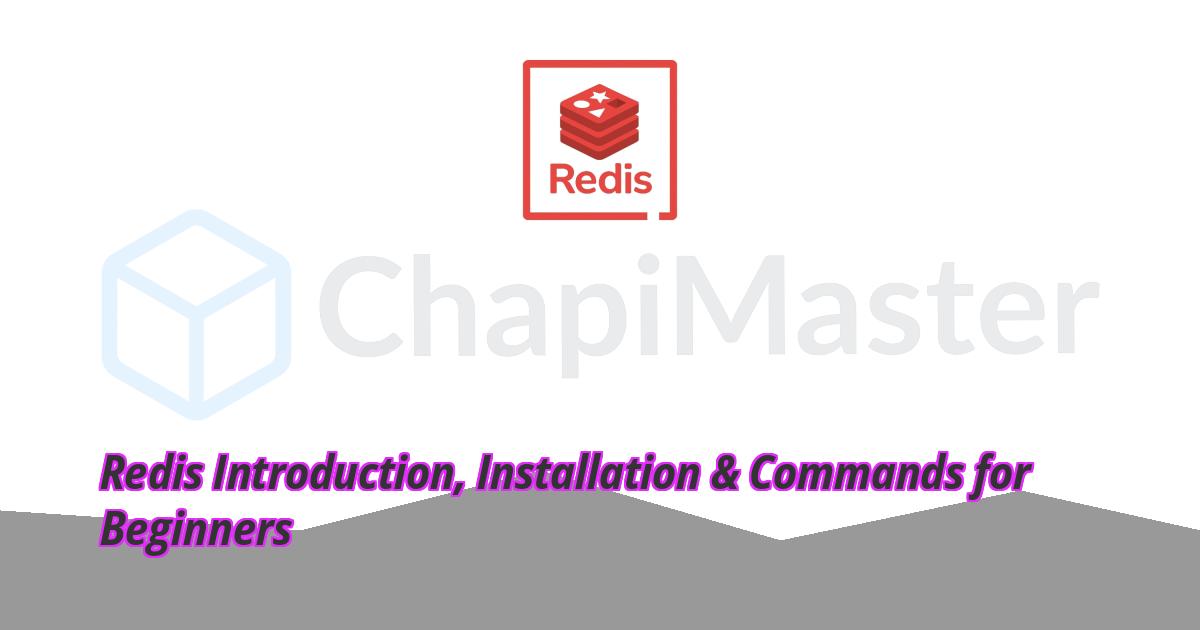Redis Introduction, Installation & Basic Commands
Redis is a fast, advanced key-value data store often used for caching, real-time analytics, message queues, and session management. It provides a richer set of commands than traditional caching systems like APC or Memcached.
⚡ Redis stores data in memory, making it extremely fast — often processing millions of requests per second.
1. What is Redis?
Redis (Remote Dictionary Server) is an open-source, in-memory data structure store that supports multiple data types — not just strings. It’s widely used in modern web apps for:
- 🔹 Caching frequently accessed data
- 🔹 Managing sessions
- 🔹 Handling real-time analytics
- 🔹 Implementing queues and pub/sub systems
2. Installation & Setup
Download Redis from the official Windows port or GitHub repository:
After installation, set the path in environment variables for easy command-line access. Redis runs on default port 6379.
🧠 Bonus: Use RedisInsight — the official Redis GUI — for a visual view of your databases and keys.
3. Common Redis Commands
Here’s a quick reference of useful commands for Redis setup, connection, and data management.
🔹 Server & Connection Commands
redis-server # Start Redis server
net stop Redis # Stop Redis service (Windows)
net start Redis # Start Redis service again
sudo systemctl restart redis # Restart Redis (Linux/macOS)
netstat -ano | findstr :6379 # Check if Redis is running on port 6379
redis-cli # Open Redis command line interface
CONFIG GET requirepass # Check if password protection is enabled
🔹 1. Connection & Info
PING # Check if Redis is alive → returns PONG
AUTH password # Authenticate if Redis has a password
SELECT 0 # Switch to database (0–15 default)
FLUSHDB # Delete all keys in current DB
FLUSHALL # Delete all keys in all DBs
INFO # Get Redis server info (clients, memory, etc.)
🔹 2. Strings (Basic Key-Value)
SET key value # Store a string
GET key # Retrieve a string
DEL key # Delete a key
EXPIRE key seconds # Set expiry
INCR key # Increment integer value
DECR key # Decrement integer value
SETEX key seconds value # Set with expiry
APPEND key value # Append to existing value
🔹 3. Lists
LPUSH key value # Add to start
RPUSH key value # Add to end
LPOP key # Remove first element
RPOP key # Remove last element
LRANGE key 0 -1 # Get all list items
LLEN key # Get list length
🔹 4. Hash
HSET key field value # Set hash field
HGET key field # Get single field
HGETALL key # Get all fields
HDEL key field # Delete a field
HEXISTS key field # Check if field exists
HINCRBY key field number # Increment numeric field
🔹 5. Set
SADD key value # Add unique values
SREM key value # Remove value
SMEMBERS key # Get all members
SISMEMBER key value # Check existence
SCARD key # Count items
SUNION key [key...] # Union of sets
SINTER key [key...] # Intersection of sets
🔹 6. Pub/Sub
PUBLISH channel message # Send message to a channel
SUBSCRIBE channel # Listen for messages
UNSUBSCRIBE channel # Stop listening
PSUBSCRIBE pattern # Subscribe to pattern channels
4. Extra Handy Commands
KEYS * # List all keys (avoid in production)
TTL key # Check key expiry
RENAME oldKey newKey # Rename a key
EXISTS key # Check if key exists
TYPE key # Show key type (string, list, etc.)
PERSIST key # Remove expiry and make permanent
5. Quick Test
After running redis-cli:
> SET name "Shahroz"
OK
> GET name
"Shahroz"
> INCR counter
(integer) 1
> KEYS *
1) "name"
2) "counter"
✅ You’ve now successfully installed and tested Redis locally! You can now explore advanced topics like Lists, Hashes, Sets, and Pub/Sub.


